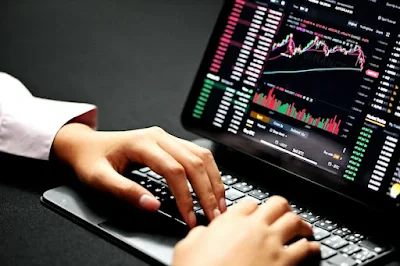Slippage is a term familiar to most Forex traders and investors. Unfortunately, it’s also an ugly reality that can put a serious dent in profits.
This article examines what slippage is, how it can be avoided, and why it’s so important to know how to minimize this risk when trading in the FX market.
Along with some expert tips for cutting out losses due to slippage and maximizing your potential gains from forex investments, we'll provide you with information about protecting yourself against hidden costs associated with different types of transactions.
Read on as we look at ways to turn the tables on Forex slippage!
Understand the concept of forex slippage and how it affects your profits
Forex slippage occurs when an investor purchases or sells a currency pair at a rate different from the expected rate. It is important for investors to understand how forex slippage can affect their profits, as it can either result in higher gains or bigger losses.
The degree of slippage may depend on various factors such as market conditions and the difference between the order price and the market price.
Brokers may also set limits on slippage, which allows them to protect investors from exposure to unfavorable markets.
By understanding forex slippage and its implications, savvy traders can take advantage of these opportunities while minimizing risk to ensure steady gains over time.
What Is Funded Trading Order Slippage?
Funded trading is a way for traders to get access to more capital than they already have in their accounts.
Through this practice, traders can increase their positions and keep more of the profits from their trades when the market moves in their favor.
Funded trading allows you to take larger positions without worrying about having enough money in your account.
By obtaining funding from a third party, traders can avoid the risk of slippage on their trades.
Funded trading order slippage occurs when there is an unexpected change in the market price between the time your order is submitted and when it’s filled by your broker.
This could result in you being charged a higher rate than the one you originally submitted your order for.
Analyze the markets to identify potential spikes in volatility that can cause slippage
Swings in the stock market create uncertainty for potential investors, making it important to analyze the markets and identify potential spikes in volatility.
Looking at factors such as news cycles, liquidity, and technology disruption can help in understanding when these swings may occur.
Slippage can affect significant profits - especially for large investments or those trading on margin - so anticipating when a market surge or decline is imminent helps traders take advantage of predicted movements rather than being subject to them.
While sudden spikes in volatility are unpredictable by nature, it pays off to study wider macroeconomic trends and indicators that may help anticipate them before they happen.
Use stop orders strategically to reduce the risk of slippage
Stop orders can be a great tool for reducing the risk of slippage in trading. A stop order works by creating an order to buy or sell when a stock reaches a certain predetermined price level, either above or below the market price.
This allows traders to manage their risk by setting maximum limits for losses and also helps to lock in profits if used correctly.
When utilizing stop orders, it's important to consider the various fees and costs associated with stopping out of your position and also strategy related considerations like volatility and liquidity that may impact your order.
A clever use of stop orders can mean the difference between success and failure for both short-term and long-term traders, allowing them to protect their investments with relative ease.
Monitor your trades closely and use a trailing stop order to maximize profits with minimal risk
Monitoring trades is essential for maximizing profits and keeping risk to a minimum. A trailing stop order is one of the most effective tools available to help traders stay alert and make timely decisions.
Not only will it protect your investments if the market moves against you, but it also gives you flexibility when things move in your favor.
By focusing on specific triggers, such as price level or volatility, you can adjust the trailing stop order accordingly to give yourself the best chance of success.
Additionally, by using technical analysis along with trade monitoring and trailing stops, you can further reduce risk and ensure that your profits are maximized.
Limit your open positions to minimize potential losses from slippage
Slippage is a common problem among investors, and can often cause costly losses. The best way to reduce the impact of slippage is to limit your open positions.
Trying to juggle multiple trades without carefully spacing or planning them out can increase the possibility of slippage, especially if you're trading in fast-moving markets or on volatile assets.
Keeping track of your position size, entry and exit points, and other variables goes a long way toward keeping slippage from eating away at your portfolio.
While losing money because of market changes is inevitable when trading, taking smart steps like limiting your open positions can help keep unnecessary losses to a minimum.
Maintain an adequate amount of margin in your trading account to prevent excessive losses from slippage
As a trader, having an adequate amount of margin in your account is important to mitigate any losses that could be caused by slippage.
Slippage occurs when the price you asked for isn't available and instead, the order is filled at a different price. This can lead to significant losses if your account has limited margin available. It's essential to ensure you have enough margin to cover this possibility and remain solvent even in volatile markets.
The best traders will keep an ample amount of margin in their trading accounts to protect themselves from slippage and other unforeseen events.
If you're new to trading and don't know how much margin you need, it's always best to seek professional advice before executing any trades.
Forex slippage can be a major factor in determining your trading success, so it's important to understand and manage the risks associated with it.
To do this, you should analyze the markets to identify potential spikes in volatility that can cause slippage; use stop orders strategically to reduce risk; and keep a close eye on your open positions and regularly adjust trailing stops to maximize profits with minimal risk.
Lastly, try to keep your open positions as low as possible, and always make sure that you maintain adequate margin in your account to avoid excessive losses from slippage. By keeping these points in mind, you will be able to drastically improve your chances of profitable trading.

.png)









0 Comentarios
Por favor deja tu comentario, pero vuelve mañana para conocer nuestra respuesta o has clic en el botón "Avísame" para que sepas que te respondimos.